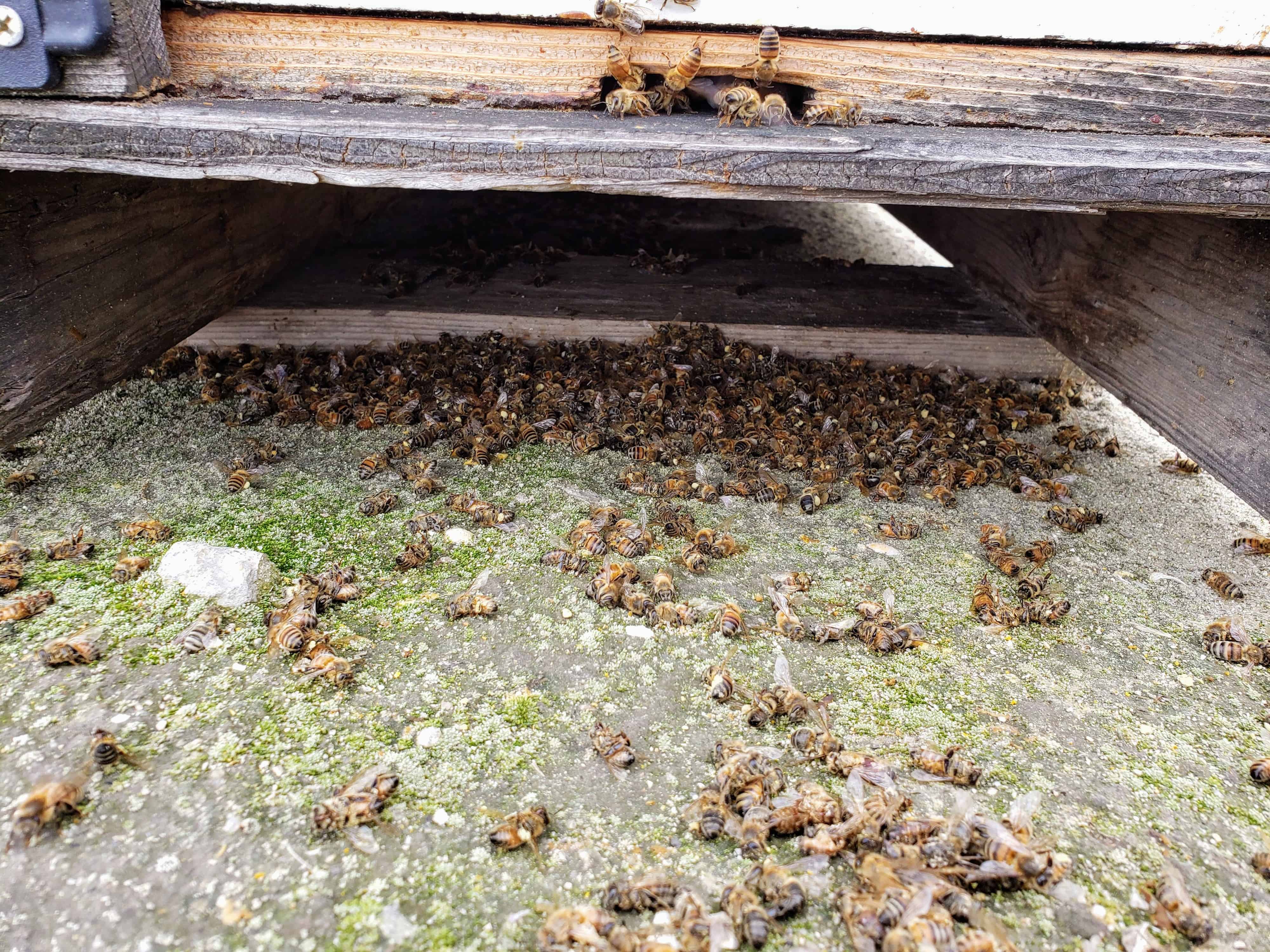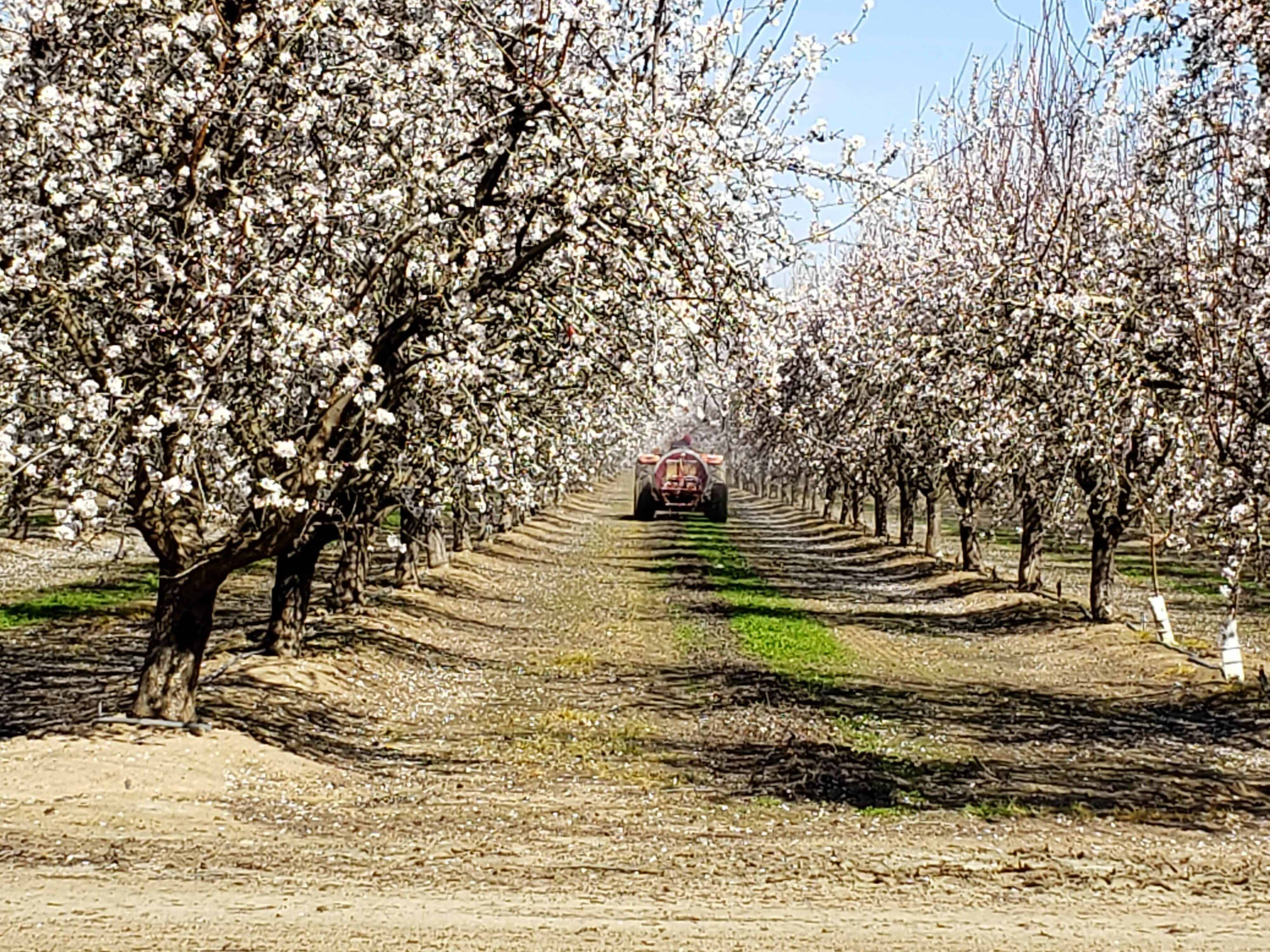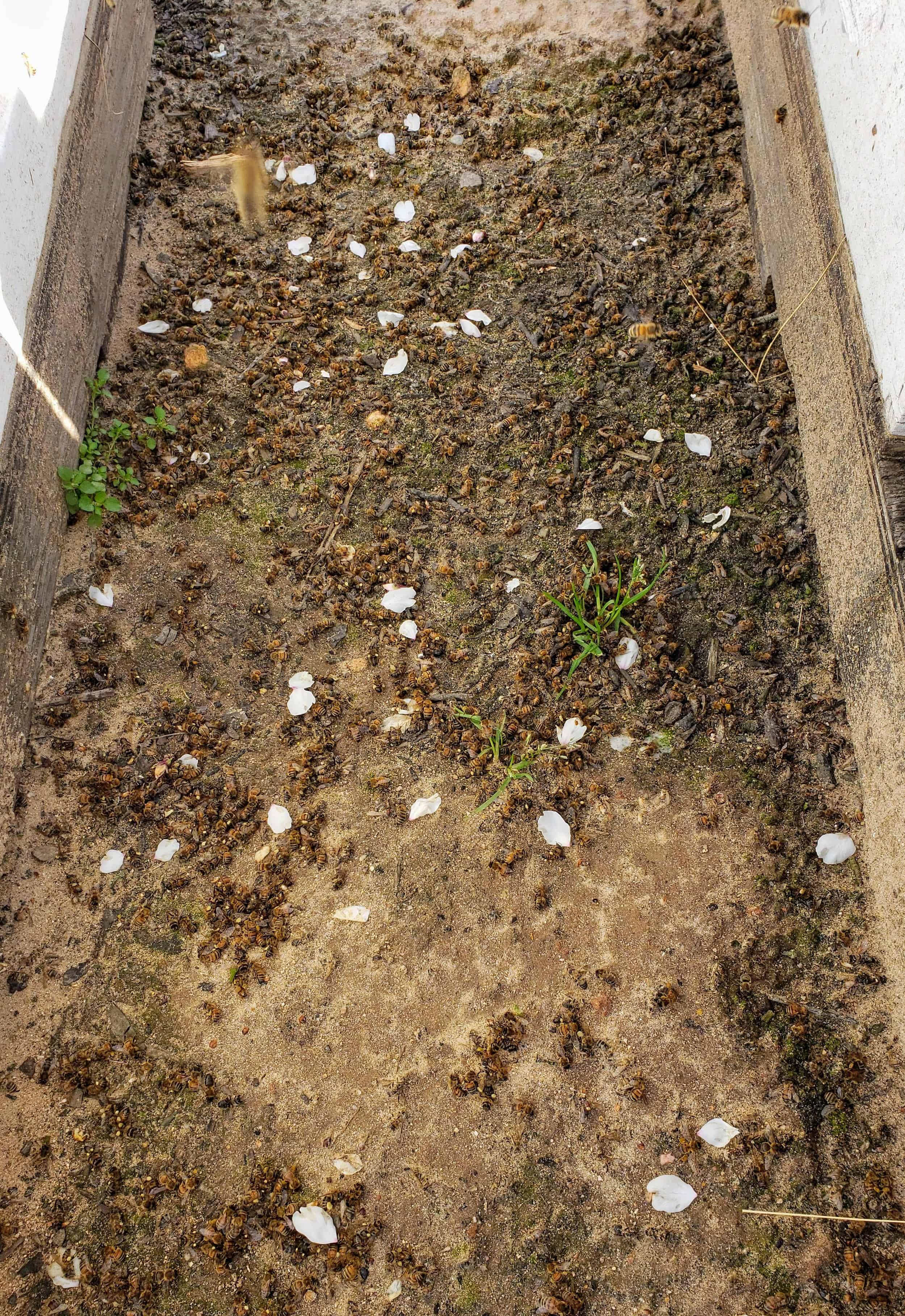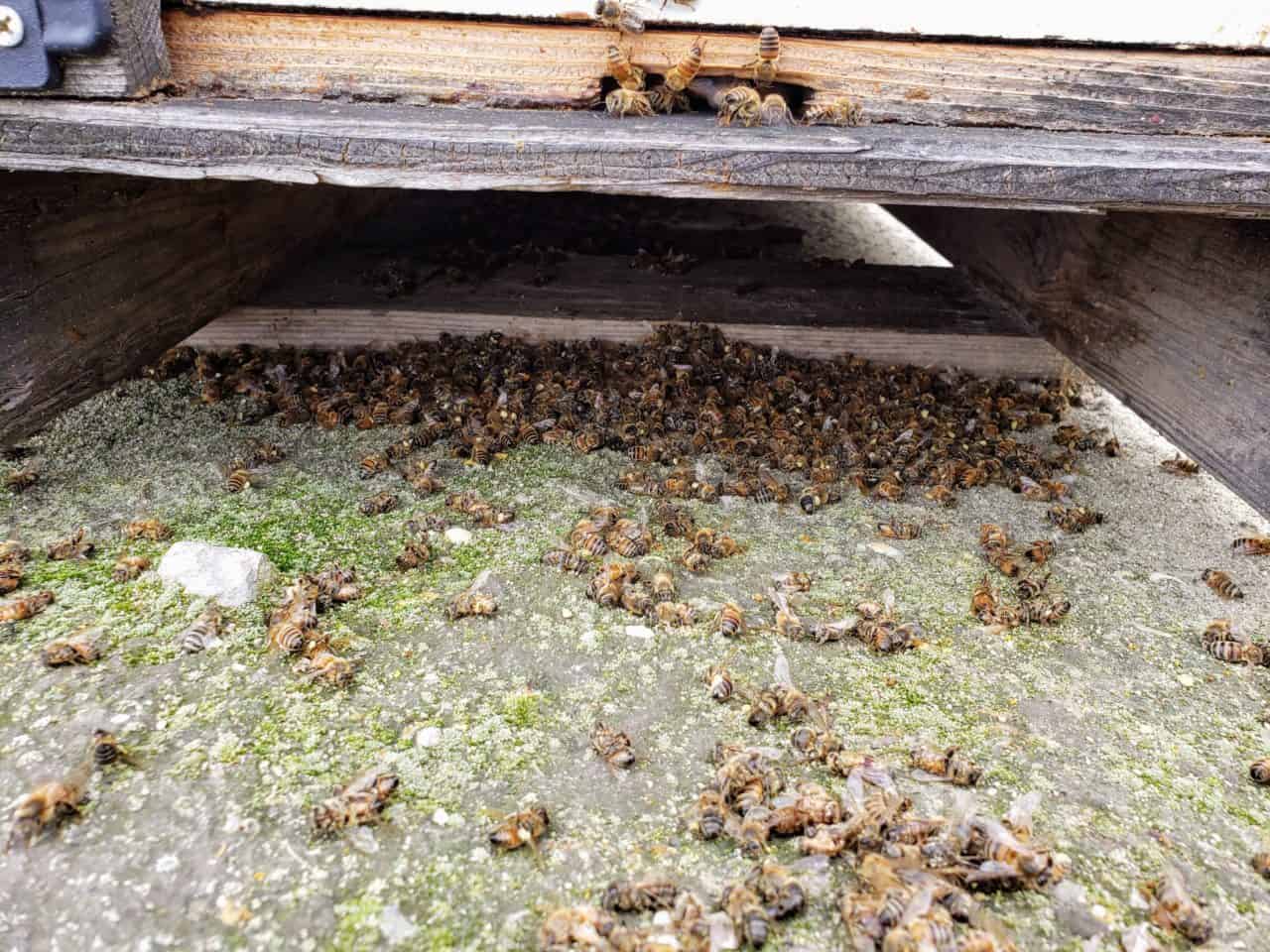This February while traveling around the almond orchards in central California, I observed many instances of dead pollen foragers at the entrances of colonies. In addition, many beekeepers reported being approached by their growers, who were concerned by the number of dead bees they were seeing along with the lack of flight activity in the orchards. Because of past issues with bees getting sprayed, some beekeepers suspected pesticide poisoning. However, after observing a number of these cases first hand, I concluded that most of the time environmental conditions were the main factor causing bee death.
In many cases, I noticed that North-facing colonies on each pallet had far more dead bees than those with South-facing entrances. If these were simple spray kills you would expect an equal amount of dead bees at all entrances, or even more on the South side because of increased activity and exposure. Also, when pallets were placed on the North and South sides of an East-West orchard road, the colonies on the North side had fewer dead bees than the ones on the South, which were shaded by the trees. These observations made me rethink the more obvious pesticide culprit, and consider other suspects.

The weather this year was a big challenge for bees and beekeepers, with lots of rain and daytime temperatures rarely above 50 degrees for much of February. Bees were flying in marginal conditions, and I had the feeling that many foragers ended up getting chilled and never returned to their hives. The coolest air in the almonds is sitting on the orchard floor, and I believe there may be pockets of still, even cooler air under the pallets. As tired and cold bees return from foraging, weighed down with full corbicula, they hit the cold air below the entrance and drop to the ground. If you ever observed a returning forager, you noticed how it dips down below the level of the entrance while homing in. If they become chilled or wet, they land on the ground or the grass in front of the hive, and end up wandering around until they succumb to the elements.

Unsettled weather patterns through much of February meant the conditions would change rapidly throughout the day. Although bees can sense barometric pressure changes and will try to return from foraging before a storm hits, it seemed that they were often taken by surprise (as I was!) by unexpected, sudden showers. On a couple occasions, I observed foragers piling back into the hive while sunny and downpouring at the same time. Some of these were knocked out of the air by raindrops as they prepared to land at the entrance.
While sampling colonies in the almonds this year it was common to see and hear sprayers in the surrounding orchards. Applying bloom sprays in the middle of the day is not a best management practice because while not acutely toxic to adult bees, fungicides are harmful to larvae. Also, recently sprayed flowers are not as attractive to bees so the overall pollination rate can be reduced. To see the the Honey Bee Best Management Practices for California Almonds published by the Almond Board of California click here.

These bloom sprays likely affect foragers ability to fly, and in some cases might have exacerbated the issue of pollen foragers dying at the entrances. The surfactants in bloom sprays are similar to soap in that they break the surface tension and soak into any surface, including through the bees’ hair. Through evaporative cooling the bees’ body temperature may drop enough to affect their flying ability. I did collect a number of pesticide samples from both stored pollen and dead foragers during the bloom, and I suspect there will be traces of fungicides present. Most pesticide tests of bees/pollen in almonds come back with a variety of chemicals (mostly herbicides and fungicides), but most are in small amounts that wouldn’t cause an acute poisoning. Big problems can arise when insecticides are mixed in the same tank with fungicide bloom sprays, but I did not see evidence of that this year. In short, I believe getting wet from the sprays poses a much more immediate threat than the lingering effects of the fungicides on brood. After almond pollination a few beekeepers reported a little brood damage from possible chemical exposure, but the issue of dead pollen foragers greatly improved as weather warmed in late February into March.

Overall it was a less-than ideal almond pollination season, and seeing foragers full of high-protein pollen dying within inches of their colonies was disconcerting for beekeepers and growers. And while bloom sprays may have worsened the effects by wetting and chilling foragers, I believe that poor flying conditions, cold air near the ground, and quick changes in weather are to blame for most of the dead bees.
